Soil is the primary system from which the plant lives and absorbs water and critical nutrients from. Let’s understand the dirt so we can learn how to provide the best soil for coffee.
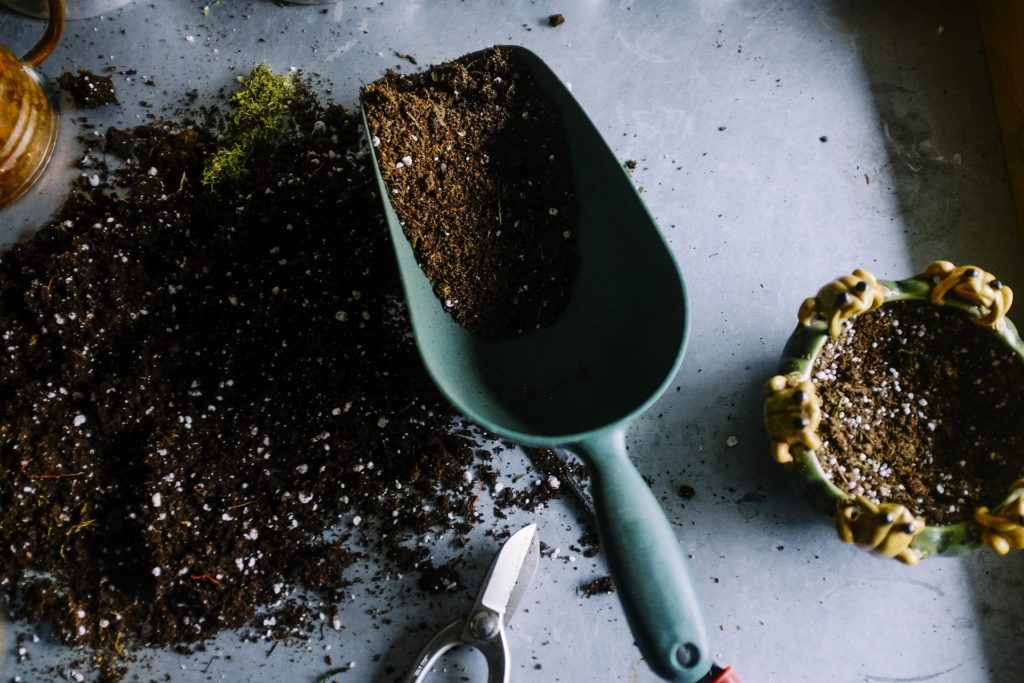 Soil is actually alive, an ecosystem in itself. Think of soil as a container holding the essential nutrients of life. If you begin taking out more than can be replenished the system fails.
Soil is actually alive, an ecosystem in itself. Think of soil as a container holding the essential nutrients of life. If you begin taking out more than can be replenished the system fails.
So it’s important to understand how our soil interacts with our coffee plants.
Your soil provides nutrients, footing, water holding abilities and protection to your plant’s super important roots.
If we make sure that soils are the proper mix, giving the plant plenty of organic matter, moisture, aeration, nutrients and cover. We can ensure a healthy productive plant, giving you the best cup of coffee that you can grow.
According to Luis Álvarez many coffee farmers in central america are not properly trained on providing the best soil conditions for coffee to really thrive.
If You are planting in the ground remember each location has its own regionally specific conditions. Meaning available nutrients and soil structure will vary.
For this reason you should get your soil tested. Lots of counties in the united states have local county extension offices that you can take a sample to and they can test it for you.
Either search in google or check this link out. It will find the closest extension office to you. This a a great gardening resource.
However, Such a small number of us have a good natural habitat and soil for coffee. This doesn’t mean we can’t grow coffee, it just means we have to try a little bit harder.
With good plant placement and a proper soil mixture you can certainly grow your own coffee at home.
Nutrients
Your plant needs these three basic macro nutrients and a small list of micro nutrients to survive.
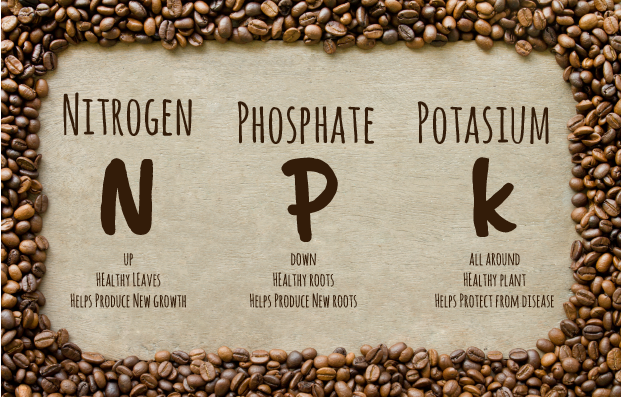
The three basic nutrients are commonly referred to as N-P-K.v Each nutrient does a little something different for your plant.
- Nitrogen(n) is one of the most important macro nutrients, as it is used for essential functions such as photosynthesis and new tissue production, among a long list of other processes.
- Phosphorous(p) contributes to healthy root growth and flower production. Phosphorous helps your plant convert nutrients into usable building blocks. Phosphorous is an especially important nutrient in the soil for younger coffee plants especially.
- Potassium(k) is essential to overall plant health. Having proper amounts of potassium give you better fruit quality and a more disease resistant plant.
A little sentence I use to remember what each nutrient is used for is this: “up, down , all around.”
There is a long list of macro nutrients, not just nitrogen(n),phosphorous(p), and potassium (k) , although these are the major ones.
There are also micro nutrients that your coffee plant gets from its soil.
These nutrients are zinc, magnesium,boron,copper and iron. Total there are 16 nutrients(macro+micro) that your plant need to fully thrive and optimize your coffee.
For micro nutrients you need less of a quantity of them but that does not make them any less important.
However, if you had a soil with an abundance of nutrients for your plant but the PH was wrong. It would be a complete waste.
Soil PH
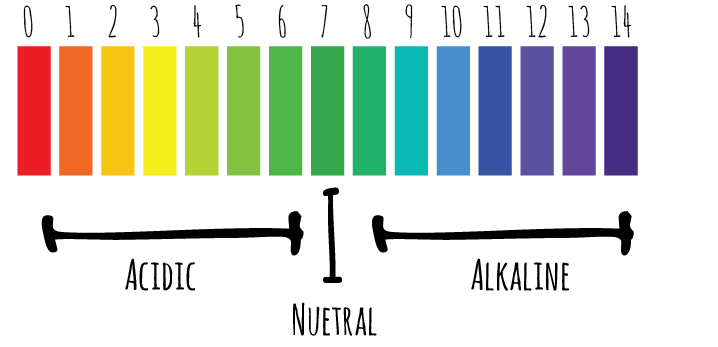
An important factor in a healthy soil is PH. The PH of the soil is what actually determines how easily a plant is able to withdraw nutrients. If the soil PH is out of balance the soil holds on to the nutrients tighter, making it harder for the plant to absorb them. Soil Ph is a measure of the acidity and alkalinity in the soil. The ph scale starts at 0 and goes to 14, with 7 being neutral.
Anything below 7 is acidic and anything above is alkaline.
If planting directly into the ground, soil PH is incredibly hard to change from what it naturally is. This is because soil Ph is affected by what the soil is made up of. So if you’re planting directly in the ground, be sure to get it tested. You can buy a soil test kit to check the PH. But the other features are kinda pointless, these can not, in my opinion test accurate numbers of the nutrients in the soil. You would also need to test the actual plant tissue to get a completely accurate reading.
That’s just my two cents on those types of tests.
So, since soil ph is affected by the materials used we can pick specific mediums to use to create a perfect environment for coffee, if planting into a container or raised bed.
Coffee prefers slightly acidic soil but has been known to grow in range of soil Ph conditions from 4-7.
The ideal PH number we are shooting for when it comes to the perfect soil for coffee is 6 – 6.5.
Soil Structure
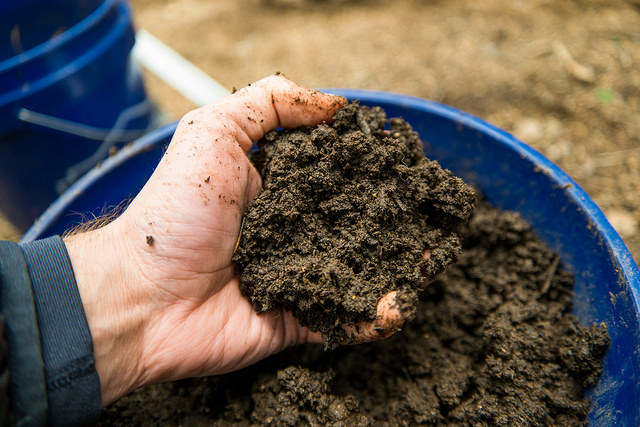
Proper soil structure refers to the way that particles in the soil such as sand,silt,clay are arranged. How do they interact with each other? Have they been compacted leaving very little space in between them? Think about a soil made of mostly clay and how compacted it can be. Hard as a rock and takes forever to drain.
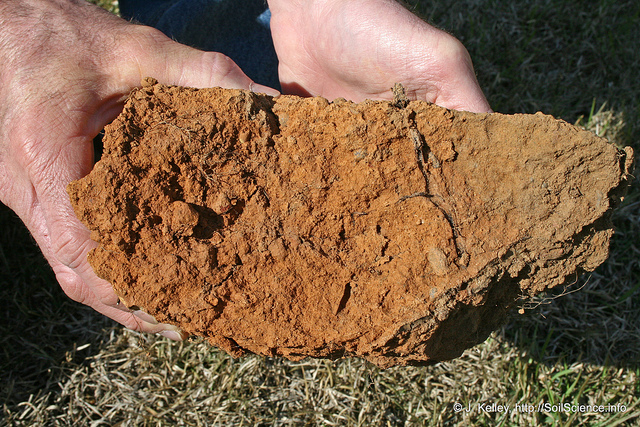
Sand, silt, clay and organic matter bind together to provide stucture to the soil. The individual units of structure are called peds.
Soil structure affects water retention and absorption.
Think of a soil that is mostly clay. Water does not seep into the ground very well and there is tons of runoff.
Having a soil structure that is overly loose isn’t the way to go either.
There is too much air flow and not enough holding capacity.
All of your water will flow out of your soil too quickly for the plant to utilize it. That goes for nutrients as well.
Coffee prefers a soil with plenty of organic matter which helps the soil grip onto water and nutrients.
It’s all about having a perfect balance, creating a nice loamy soil. Which basically means to have the best aspects of water retention and drainage.
Top Soil
Something that I just want to mention quickly is top soil.
As home growers we don’t really have to worry about this but the erosion of top soil is a huge factor in coffee quality that farmers are constantly battling against.
The top soil is where all the nutrients that the plant loves and needs are held. Lots of coffee plantations are on mountain ranges and slopes and when heavy rainfall comes through lots of good stuff gets washed away. Heavy equipment use such as tractors for harvest also contribute to top soil erosion.If this is continued eventually the soil will not be able to sustain the plants that it is living with.
If you are container or bed gardening, putting down a nice thick layer of mulch to protect your soil and help with water retention is a super easy and effective step to help provide a perfect environment to grow the best coffee that you can.
You don’t have to go up to your local box store to buy mulch either. My favorite mulch to use is fallen leaves from trees! There are bags of leaves at your neighbor’s curb everyday if you search a little.
It’s a perfect sustainable and FREE mulch source.
The perfect soil for coffee
There is a great video on youtube from the guys at migardener Which I’ll link below. They not only talk about ideal soil for coffee but also go into detail about coffee’s natural habitat and easy ways you can recreate that at home. I’ve used their soil mix and noticed great results with it. The mix is:
- Peat moss
- Compost
- Vermiculite
- And the special ingredient, volcanic rock dust.
Below are links to each ingredient.
<iframe width=”560″ height=”315″ src=”https://www.youtube.com/embed/Zh_Bohn-VUA” frameborder=”0″ allow=”autoplay; encrypted-media” allowfullscreen></iframe>
Lava rock is usually used as a decorative touch, Laid down on top of the soil almost like a mulch. That’s not how we want to use it. We want it as part of our soil.
When you get lava rocks normally they come in big chunks, I took Luke from MIgardeners advice and just crushed up the bigger chunks with a hammer. I just put them in an old pillow case and beat them into a medium-coarse grind.
I like to put equal parts of these things together watering lightly as I mix.
I believe this mixture provides adequate amounts of nutrients while mimicking the natural soil for coffee. This natural environment promotes healthy and vigorous growth all around.
Peat moss is naturally acidic providing a good ph level for the plant as well as helping with water retention. Compost is adding plenty of organic material as well as nutrients, while also giving the soil extra water retention.
Vermiculite is for a good soil structure, giving the soil proper aeration and flow.
And finally, Lava rock . This special ingredient is a good additive for your coffee plant because it provides plenty of iron and other micronutrients that the plant needs to really thrive while giving a perfect balance of soil structure.
So, the overall Ideal soil will have plenty of nutrients available to the plant while having good water retention but at the same time have a balance of aeration and flow.(Not so much to ask for right?!)
This will give a perfect environment for the roots to absorb all those nutrients in there and really expand out and grow. Also remember that soil isn’t just dirt it’s a living thing and we must invite plenty of good life to be living in our soil with plenty of organic material.
A healthy soil isn’t the only thing that a coffee plant needs to thrive.
Read on to find out everything you need to know about growing coffee.
If you have any other questions about growing coffee don’t be afraid to send them this way, either in the comments below or through email!



